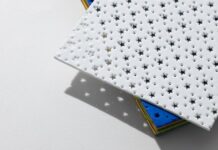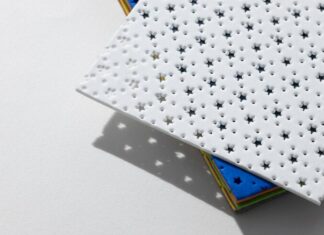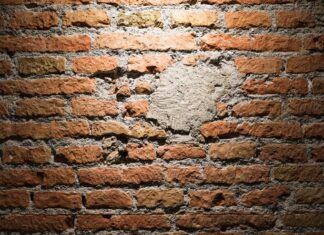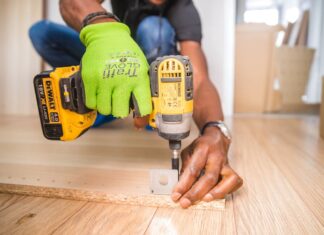Cleaning up after a storm isn’t a walk in the park. Besides being challenging, this procedure can be dangerous since it involves maneuvering around broken items and contaminated water. It’s, therefore, vital to take precautions such as wearing protective equipment when cleaning or hiring professional cleaners if you’re unsure of doing an excellent job.
If you decide to do it yourself, you must familiarize yourself with practical steps and how to dry your items properly. This is important since dump surfaces and items are ideal areas for mold growth. For instance, you must learn to clean and dry items like carpets to prevent severe damage.
Fortunately, you can easily find tips to clean different surfaces and materials, such as the helpful tips on this page. Moreover, this article discusses seven ways to clean your home after a storm. Keep reading!
1. Return To Your Home
Table of Contents
Suppose your area was hit by a severe storm that made you flee. In that case, the first step will be returning home. Unfortunately, due to the agitation and the need to know how damaged your home is, you might rush to return home, which isn’t advisable.
Your home might have been severely damaged and unfit to re-enter. For example, a storm can break timber and destabilize slabs. Entering such a home equals risking your well-being since broken or weak items are hazards that can cause serious injuries.
Besides that, a storm-damaged home might have electrical wiring contacting water. These wires can cause deadly shocks to anyone re-entering the house. For these reasons, it’s vital to return home only after local authorities have cleared you to do so.
Among the things the local authorities will check before allowing you to re-enter your home is checking electrical connections. This will help determine if there’s a likelihood of experiencing shocks. They’ll also assess whether there is chemical spillage that could be hazardous.
2. Assess The Damage
Once you’ve been cleared to re-enter your home, the first thing you’ll need to do is to assess the damage. Remember to wear protective gear such as a helmet, gloves, goggles, boots, and a waterproof apron to be safe from contaminants and avoid injuries.
Check for broken glass and furniture, as well as leaking pipes. It’s also vital to evaluate the damage to your items and record it. Taking as many photos as possible is essential since they’ll come in handy when proving the damage extent to your insurance company.
3. Contact Your Insurer
Before beginning the cleaning procedure, it’s imperative to contact your insurer. They’ll need to assess the situation to determine the compensation you should receive.
If your insurance company serves many homes in your area, they might not show up at your place immediately after calling them. Therefore, as earlier stated, you should document the damage, especially if the adjuster won’t make it before you begin the drying procedure.
4. Begin The Cleaning And Drying Process
You can begin the cleaning and drying process by removing all the standing water and debris. At this point, you’ll need the help of push brooms, mops, and a wet or dry vacuum. You should also increase your home’s air circulation by opening windows and switching on fans for quick drying.
Remove wet drywall and soggy furniture and thoroughly dry them to prevent mold growth. Wet carpets, for example, can encourage mold growth, which is challenging to contain. However, there are practical ways to dry each item and reduce the damage. For one, you can use a wet vacuum to extract excess water and moisture.
5. Discard Destroyed Items
While they might have cost you a fortune, you may not be able to save water-damaged upholstered furniture, mattresses, electronics, and other appliances. That said, your only option might be to discard them.
Every severely water-damaged item should be appropriately discarded to avoid polluting the environment. It’s, therefore, vital to research proper ways to discard your items. If this sounds like a lot of work, consider hiring junk removal services.
6. Clean Items That Can Be Saved
After the flood, there may still be salvageable items. For example, you might be able to save metal and wood furniture, dishes, countertops, toys, and clothes. Unfortunately, while these items might be in good working condition, they’ve been contaminated and require thorough cleaning.
When cleaning your items, ensure to use the correct cleaning agent for each. For instance, an ideal metal-cleaning detergent might not work on wood; hence using it might interfere with your woodwork. Once you’ve identified the proper cleaning agent for each item, thoroughly clean and rinse before sanitizing them.
After cleaning the items, remember to disinfect surfaces like countertops and bathrooms. Then wash the salvageable clothes with mild household detergents and dry them well to prevent mold infestation.
7. Assess For Mold Growth
After cleaning and drying your home, check for signs of mold growth. The signs of this growth may include a musty smell, runny nose or sneezing, and discoloration on walls and furniture. If you identify these signs, act fast to prevent the spread since too much mold is challenging to deal with. If you doubt your ability to eradicate mold in your home, consider hiring professionals to handle the issue.
Conclusion
A storm can cause severe property damage that might be challenging to comprehend. Unfortunately, despite the pain you might be feeling, you must also perform the restoration procedure to make your home habitable again.
Cleaning after a storm might be challenging, especially in the event of massive destruction. That said, assessing the situation is vital to determine if you’re better positioned to do the clean-up or need professional help. If you can handle the process, the above-discussed tip will be helpful for a quick, straightforward procedure.










